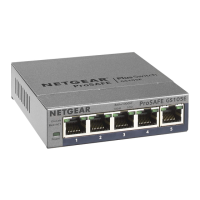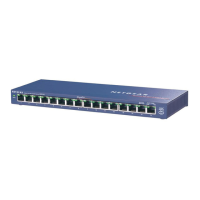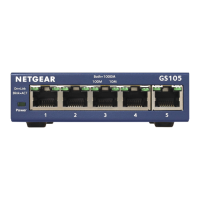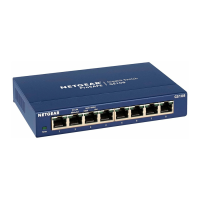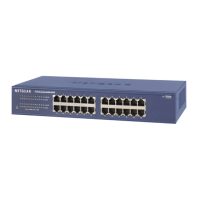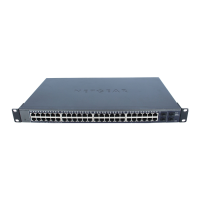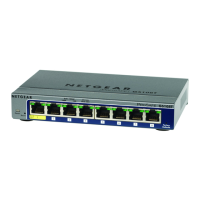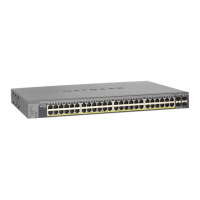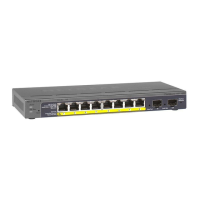Configuration Examples
359
ProSAFE 10-Gigabit Smart Managed Switch XS728T and XS748T User Manual
Creating Policies
Use DiffServ policies to associate a collection of classes that you configure with one or more
QoS policy statements. The result of this association is referred to as a policy.
From a DiffServ perspective, two types of policies exist:
• Traffic Conditioning Policy. A policy applied to a DiffServ traffic class
• Service Provisioning Policy. A policy applied to a DiffServ service level
You must manually configure the various statements and rules used in the traffic conditioning
and service provisioning policies to achieve the desired Traffic Conditioning Specification
(TCS) and the Service Level Specification (SLS) operation, respectively.
Traffic Conditioning Policy
Traffic conditioning pertains to actions performed on incoming traffic. Several distinct QoS
actions are associated with traffic conditioning:
• Dropping. Drops a packet upon arrival. This is useful for emulating access control list
operation using DiffServ, especially when DiffServ and ACL cannot coexist on the same
interface.
• Marking IP DSCP. Marks or remarks the DiffServ code point in a packet with the DSCP
value representing the service level associated with a particular DiffServ traffic class.
• Marking CoS (802.1p). Sets the 3-bit priority field in the first/only 802.1p header to a
specified value when packets are transmitted for the traffic class. An 802.1p header is
inserted if it does not already exist. This is useful for assigning a Layer 2 priority level
based on a DiffServ forwarding class (such as the DSCP or IP precedence value)
definition to convey some QoS characteristics to downstream switches that do not
routinely look at the DSCP value in the IP header.
• Policing. A method of constraining incoming traffic associated with a particular class so
that it conforms to the terms of the TCS. Special treatment can be applied to out-of-profile
packets that are either in excess of the conformance specification or are nonconformant.
The DiffServ feature supports the following types of traffic policing treatments (actions):
• Drop. The packet is dropped.
• Mark CoS. The 802.1p user priority bits are marked or remarked and forwarded.
• Mark DSCP. The packet DSCP is marked or remarked and forwarded.
• Send. The packet is forwarded without DiffServ modification.
• Color mode awareness. Policing in the DiffServ feature uses either color blind or color
aware mode. Color blind mode ignores the coloration (marking) of the incoming packet.
Color aware mode takes into consideration the current packet marking when the switch
determines the policing outcome. An auxiliary traffic class is used in conjunction with the
policing definition to specify a value for one of the 802.1p, IP DSCP, or IP precedence
fields designating the incoming color value to be used as the conforming color. You can
also specify the color of traffic that exceeds the threshold.
• Counting. Updating octet and packet statistics to keep track of data handling along traffic
paths within DiffServ. In this DiffServ feature, counters are not explicitly configured by the
